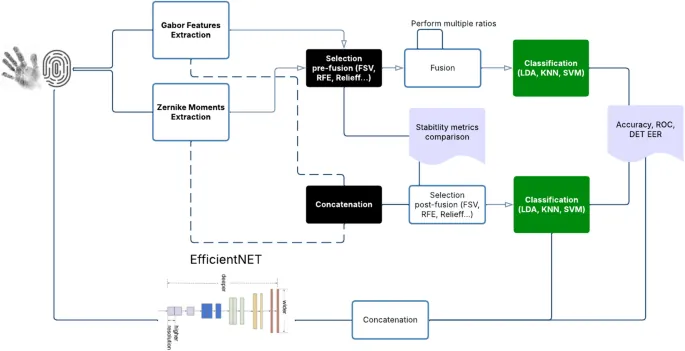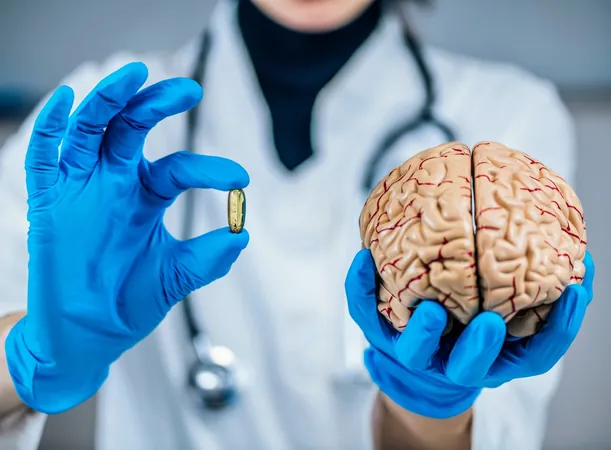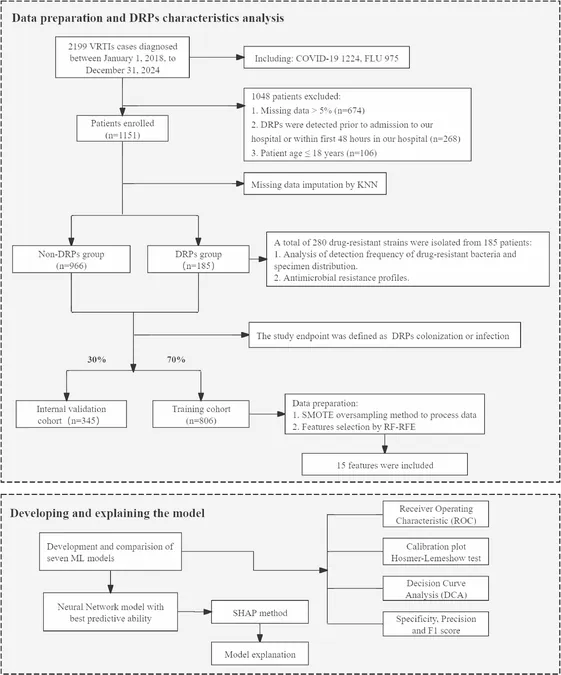
Transforming Biometric Identification: The Battle Between Handcrafted Features and Deep Learning for Hand Recognition
2025-08-10
Author: Wei Ling
Unlocking the World of Hand Biometrics
Hand biometrics, including fingerprints and palmprints, have emerged as frontrunners in secure identification due to their remarkable accuracy and user-friendly nature. As industries increasingly adopt multimodal biometrics, combining various identification methods, the push for advanced systems that balance convenience and security is stronger than ever.
The Rise of Multimodal Biometrics
Multimodal biometrics bring the power of multiple identification modalities together for enhanced accuracy and universality, allowing for a smoother user experience without compromising security. These innovations pave the way for systems that prioritize both ease of use and reliability.
Deep Learning vs Traditional Methods: The Clash of Titans
When it comes to extracting features from biometric data, traditional mathematical models provide high interpretability and efficiency. However, they often stumble over the complex variations inherent in biometric traits. Enter deep learning, which excels at crafting intricate data representations, resulting in significant gains in accuracy, though often at the cost of computational efficiency and transparency.
Innovative Approaches to Feature Extraction and Classification
Recent breakthroughs in palmprint and fingerprint recognition utilize unique methodologies such as PRENet, a CNN-based method for cohesive palmprint extraction, and a self-supervised learning framework designed to refine models through unlabeled data. Furthermore, dynamic ridge flow patterns in fingerprints are modeled using LSTM networks while combining Siamese networks with SIFT descriptors to filter out key features from partial prints.
Harnessing the Power of Fusion and Feature Selection
In multimodal systems, the fusion of processed data occurs at various levels—decision, score, and feature levels. This process allows for effective reductions in high-dimensionality data, ultimately amplifying overall system effectiveness. Importantly, ensuring that selected features are both discriminative and accurate plays a crucial role in identifying individuals.
Traditional vs. Deep Learning Feature Extraction Methods
This study evaluates conventional methods like Gabor and Zernike alongside deep learning approaches such as EfficientNetV2 to assess their performance in a multimodal space that integrates both fingerprints and palmprints. The goal? To unveil the efficacy and potential limitations each technique offers when it comes to fusion and selection methods.
Feature Extraction: The Foundation of Correct Identification
Feature extraction remains one of the most critical steps in biometric identification. Gabor filters and Zernike moments are popular traditional methods known for their robustness in processing the unique characteristics of fingerprint and palmprint textures.





 Brasil (PT)
Brasil (PT)
 Canada (EN)
Canada (EN)
 Chile (ES)
Chile (ES)
 Česko (CS)
Česko (CS)
 대한민국 (KO)
대한민국 (KO)
 España (ES)
España (ES)
 France (FR)
France (FR)
 Hong Kong (EN)
Hong Kong (EN)
 Italia (IT)
Italia (IT)
 日本 (JA)
日本 (JA)
 Magyarország (HU)
Magyarország (HU)
 Norge (NO)
Norge (NO)
 Polska (PL)
Polska (PL)
 Schweiz (DE)
Schweiz (DE)
 Singapore (EN)
Singapore (EN)
 Sverige (SV)
Sverige (SV)
 Suomi (FI)
Suomi (FI)
 Türkiye (TR)
Türkiye (TR)
 الإمارات العربية المتحدة (AR)
الإمارات العربية المتحدة (AR)